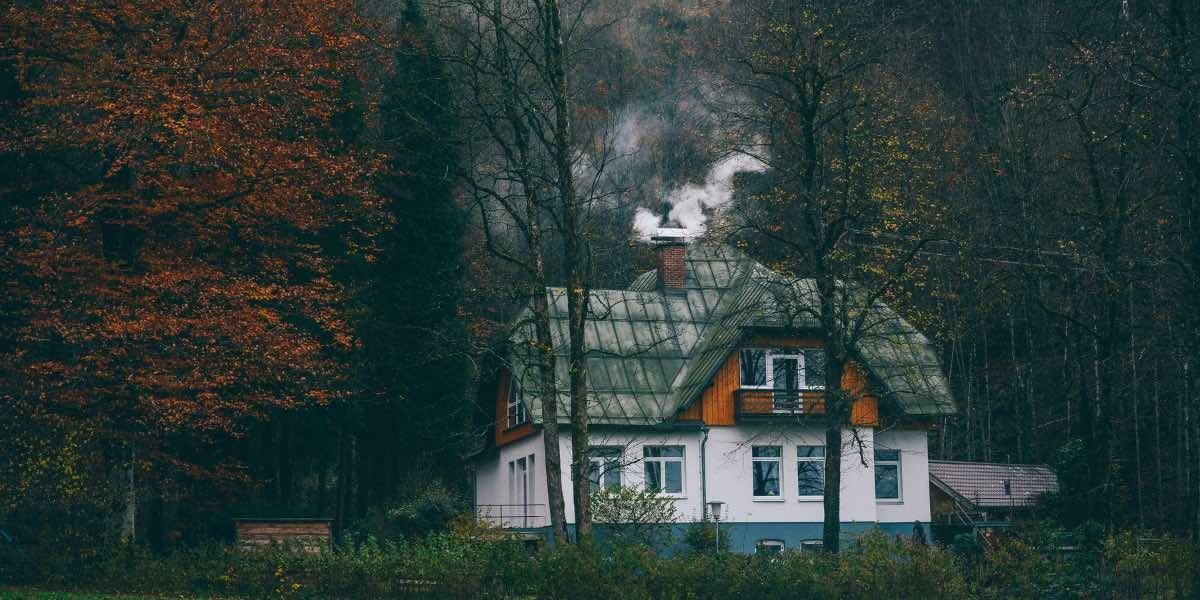Wildfire-resistant home materials have seen a growing presence in rural areas where wildfire risk remains a persistent concern. With extended periods of drought, changing weather patterns, and increased development along the wildland-urban interface, more rural homeowners are rethinking how their properties are constructed and maintained. This shift has contributed to a broader conversation around fire resilience and has encouraged the use of building strategies aimed at improving a home’s ability to endure wildfire exposure.
Read also: Wildfires and Their Impact on Communities
Why Are Wildfires Increasingly Affecting Rural Communities?
Rural areas often have extensive vegetation, limited access to emergency services, and longer distances between homes, all of which can complicate wildfire response. As wildfires have become more frequent in several regions, including parts of the western United States, rural communities have found themselves facing new challenges in preparation and recovery.
The causes of this trend are varied. Prolonged dry spells, dense vegetation, and more extreme weather events may all contribute to higher wildfire risk. In rural zones, homes are often built near forests, hillsides, or open fields, which can become pathways for fire spread during high-wind events. Because these areas are less densely populated, firefighting resources may take longer to arrive, increasing the potential for property loss.
This context has created more interest in materials and design approaches that may offer homes a better chance of resisting wildfire damage.
What Qualifies as Wildfire-Resistant Home Materials?
Wildfire-resistant materials are designed to withstand exposure to flames, radiant heat, and airborne embers—factors commonly associated with wildfire spread. These materials aim to reduce a structure’s vulnerability by slowing the ignition process or minimizing the likelihood of fire spreading to or within a building.
Fire-resistant roofing is a frequent point of focus. Roofs made from metal, clay tile, or specially rated asphalt shingles tend to perform better under ember attack than untreated wood shingles. Similarly, non-combustible siding materials such as fiber cement, stucco, or brick are more likely to resist ignition than conventional wood paneling.
Windows and vents also play a critical role. Tempered glass, multi-pane windows, and ember-resistant vent coverings can reduce the chance of interior ignition. Decks, eaves, and fences made from ignition-resistant or non-combustible materials can also be important, especially since embers can accumulate in gaps and under structures.
These materials are not intended to make a home fireproof, but they may provide added time and protection, particularly when combined with defensible space strategies that reduce vegetation and flammable objects near the structure.
What Potential Benefits Do These Materials Offer in Rural Settings?
In regions where wildfires are a recurring concern, building or retrofitting with wildfire-resistant materials may offer a range of practical benefits. These can include enhanced durability under fire conditions, potential long-term cost savings, and increased peace of mind for homeowners during high-risk seasons.
Homes built with non-combustible exterior materials may be better able to withstand brief but intense exposure to flame or embers. While no material is impervious to fire, studies have shown that some materials can slow down fire progression enough to allow for evacuation or intervention.
Insurance considerations may also play a role. In some areas, homes that incorporate fire-resistant construction features may be eligible for lower premiums or qualify under updated fire safety requirements. These potential financial advantages depend on the insurer and the level of risk in the region.
For homeowners planning to stay long-term in high-risk rural zones, these materials can contribute to a more resilient home over time, particularly if maintenance and surrounding landscape management are aligned with wildfire safety recommendations.
What Practical Limitations Do Homeowners Encounter?
Although the advantages of wildfire-resistant materials are increasingly acknowledged, rural homeowners may encounter several limitations when trying to implement these solutions. The cost of materials and installation remains a significant consideration, especially in areas where local economies rely on limited resources.
Specialty materials such as Class A fire-rated roofing or non-combustible siding may come at a higher upfront price compared to standard alternatives. For new builds, this may be factored into the design from the outset. Retrofitting existing structures, however, may involve higher labor costs and structural modifications, which can be more complex.
Access to these materials may also be a challenge. Some rural regions do not have nearby suppliers or contractors familiar with wildfire-resistant construction. Transportation and delivery can add to overall expenses, especially for large-scale projects or remote properties.
Awareness and information availability may vary as well. Not all homeowners are familiar with fire rating systems or know how to identify which products meet local building codes related to fire resilience. Educational resources and community outreach may help bridge this gap, but accessibility to accurate information remains an issue in some areas.
How Does Landscaping Interact with Fire-Resistant Construction?
While wildfire-resistant materials are important, they are most effective when used in combination with thoughtful landscaping and property maintenance. The concept of defensible space—zones surrounding the home that are kept clear of flammable vegetation and debris—has become a widely recognized element of fire mitigation in rural areas.
Landscaping choices can make a meaningful difference. Gravel, stone, and non-woody ground covers near the home reduce fuel loads, while spacing trees and trimming low branches can limit the upward spread of fire. Native plants that retain moisture and resist ignition are often recommended in these zones.
Hardscaping features such as stone walls, paved pathways, and retaining walls can create natural firebreaks and reduce opportunities for flames to reach the structure. In many cases, combining ignition-resistant materials with low-fuel landscaping increases the chances that a structure can resist ember ignition or flame contact.
When fire-resistant materials are used alongside maintenance practices like clearing gutters, sealing vents, and storing firewood away from buildings, the overall fire resilience of a property may be significantly improved.
What Role Might Policy and Building Codes Play Going Forward?
As wildfire activity continues to affect more regions, public agencies and policymakers are considering how building codes and regulations might evolve to address changing risks. Some jurisdictions have already introduced updates requiring the use of certain fire-resistant materials in new construction or major renovations within designated wildfire hazard areas.
These regulations are often accompanied by guidance documents or recommendations for homeowners, contractors, and architects. While codes vary by state or municipality, there is a growing trend toward encouraging—or requiring—design practices that take wildfire exposure into account.
Incentives and support programs may also play a growing role in promoting the use of resilient materials. In some areas, homeowners can access funding assistance or technical support to retrofit their homes. Public awareness campaigns and community education initiatives continue to be key strategies in increasing adoption.
As building practices adapt to a more fire-conscious reality, rural property owners may find themselves balancing budget constraints with long-term risk considerations. The availability of cost-effective materials and community-level planning may help ease this transition.
Read also: Protect Your Finances: Wildfires and California Housing Insights
What Does the Long-Term Outlook Suggest for Rural Housing and Wildfire Risk?
The use of wildfire-resistant materials is one component in a broader effort to manage wildfire risk in rural areas. While not a solution in isolation, these materials can be part of a practical approach to reducing vulnerability—especially when paired with other fire-wise strategies and regular property upkeep.
Research into new materials and technologies is ongoing, with some manufacturers developing composites or coatings that offer improved fire performance at potentially lower cost. Advances in construction methods may also lead to more efficient ways to integrate these materials during home builds or renovations.
As rural communities continue to navigate the complexities of fire preparedness, the decision to incorporate fire-resistant materials will likely depend on a combination of local risk levels, homeowner priorities, and available resources. While challenges remain, the rising visibility of these building strategies suggests they may become a more standard part of rural construction in high-risk areas over time.








